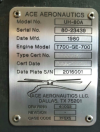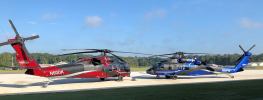Scratching my head on this one as well - especially in light of the airframe being adopted for Presidential Support mission. The HH-60W provides more power while living with the legacy cabin size of a standard H-60. My old PHI Chief pilot flies the S-92 in Thailand and its a truck of a helicopter needing little in the way of maintenance outside of overhaul of time limited components - everything is "on condition" on this helo - meaning that if its not broken, it is airworthy.The bird belongs to PHI, but I'm not sure its an "ordinary" contractor job. Now I must venture into conjecture...SOF contract in support of the Kurds?
Enough of that! Why didn't the USAF replace their aging Pave Hawks with the H-92 Superhawk?
Cabin size of the S-92 is close to the old HH-3E - we need more cabin room for gear....
Cabin size is why the Mi-8/Mi-17 continues to be popular ... Sikorsky was brilliant on this with the S-92.


